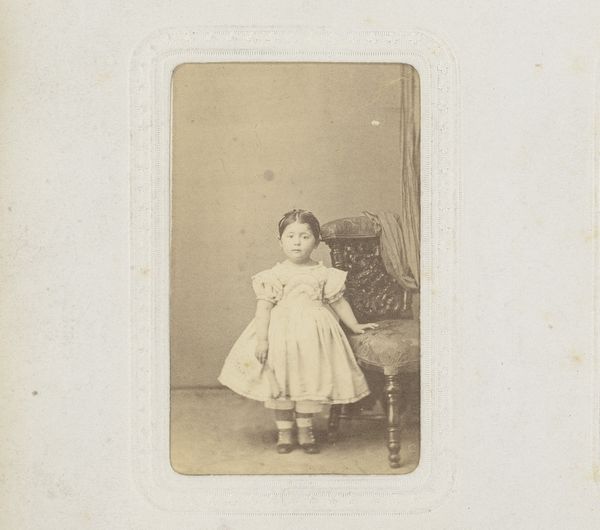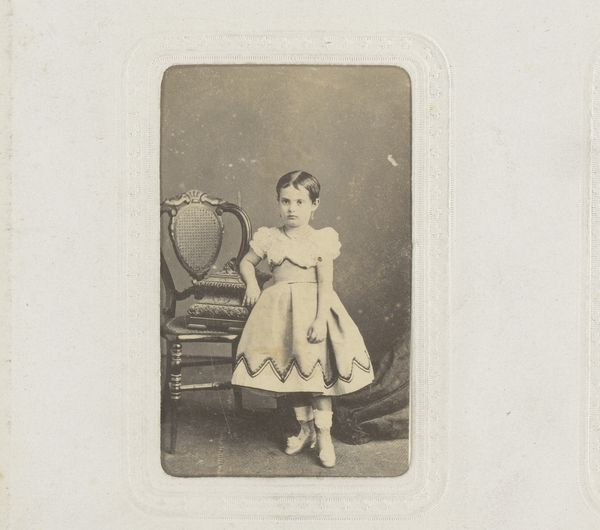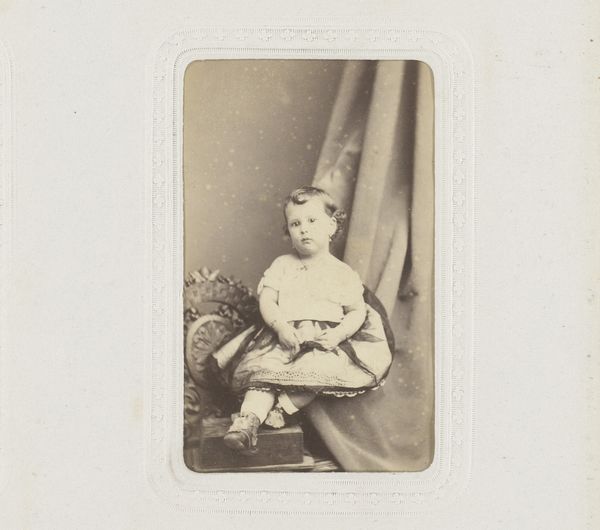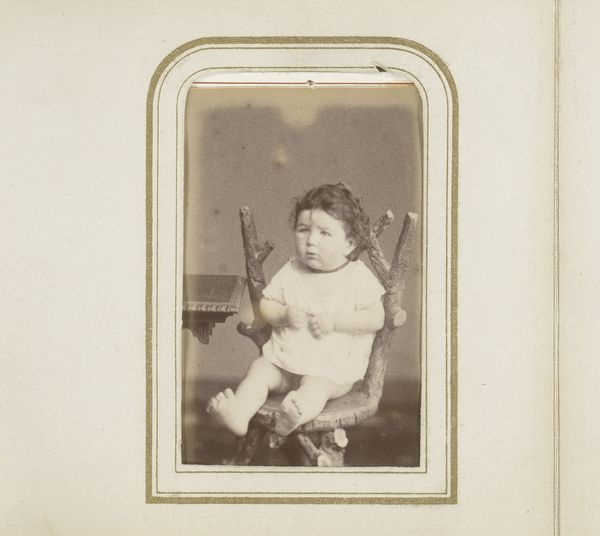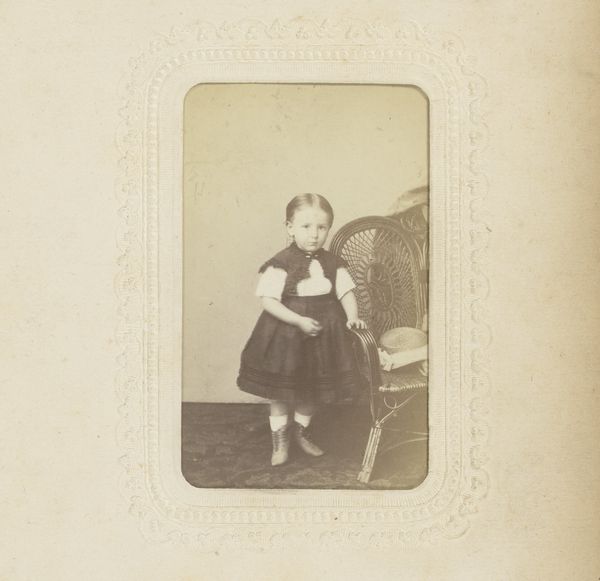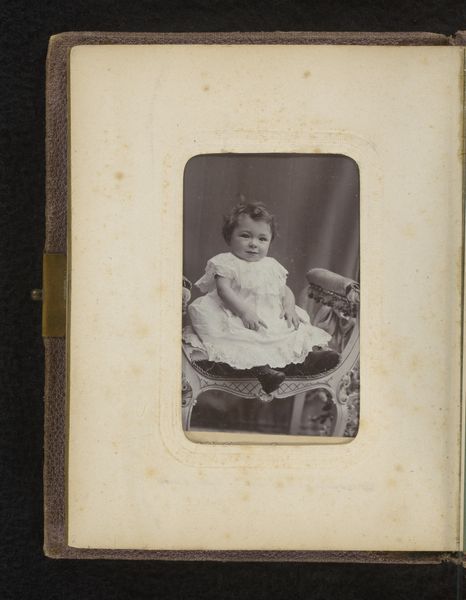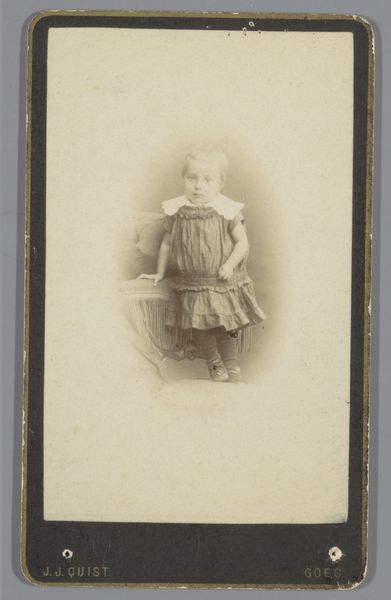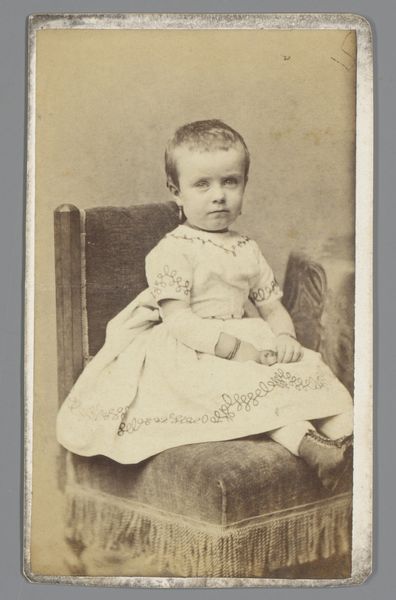
photography, gelatin-silver-print
#
portrait
#
photography
#
historical photography
#
gelatin-silver-print
#
genre-painting
Dimensions: height 86 mm, width 52 mm
Copyright: Rijks Museum: Open Domain
Curator: What strikes me immediately is the solemnity in her gaze. Editor: Agreed. We're looking at "Portrait of a Girl, Standing on a Chair," a gelatin-silver print, placing it somewhere between 1860 and 1890. Genre-painting as captured through a photographic lens. It’s attributed to Samuel A. Cohner. Curator: There's something undeniably timeless in those studio portraits. The formal posture of the girl contrasted against the soft dress, it’s precious in a way. And that knowing look, far beyond her apparent years, perhaps she's sensing this momentous occasion? Editor: Children's portraits, especially in the 19th century, always carried a lot of cultural weight. They weren't just cute snapshots. The chair, the dress – these are all symbols. Reminders of childhood as this precious but fleeting time of innocence, the dress being white points out at that exact innocence. It carries with it notions of status and upbringing. Photography in its infancy aimed for painting likeness and narrative strength and so did portraits in its time. Curator: Exactly! The carefully arranged backdrop and ornate frame give it the air of a mini theatrical production. What's that expression they used to use? Carte de Visite, or visiting card! Editor: In an interesting perspective yes! The child and chair are stage props almost. But look closer! The small, delicate cross around her neck adds this further layer of the image. The subtle nod to faith, almost. The spiritual underpinning to how children are regarded. Also that dark stripe across the hem of the dress? Curator: Hmm, like she’s already straddling the adult world, her feet literally half way down? Like a threshold or crossroads, which makes the symbol more intriguing. You start to construct her history based on details left here, a world ready to bloom into new stages. A tiny bit melancholy too, to be honest. Editor: Maybe we project our adult perspectives too much, seeing these serious portraits as burdened. But yes. As Iconographer, you do make the artwork more poignant and real for all that lives between the knowns. Curator: Likewise to the insights of a trained expert like yourself.
Comments
No comments
Be the first to comment and join the conversation on the ultimate creative platform.
